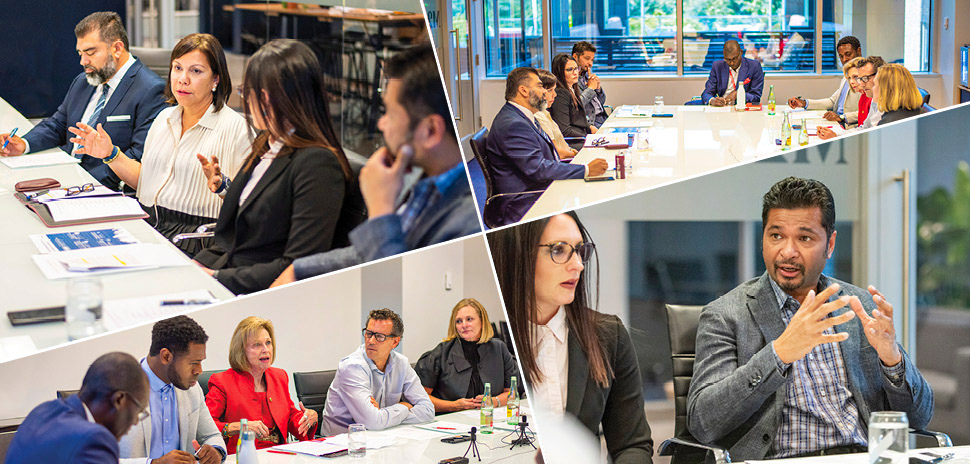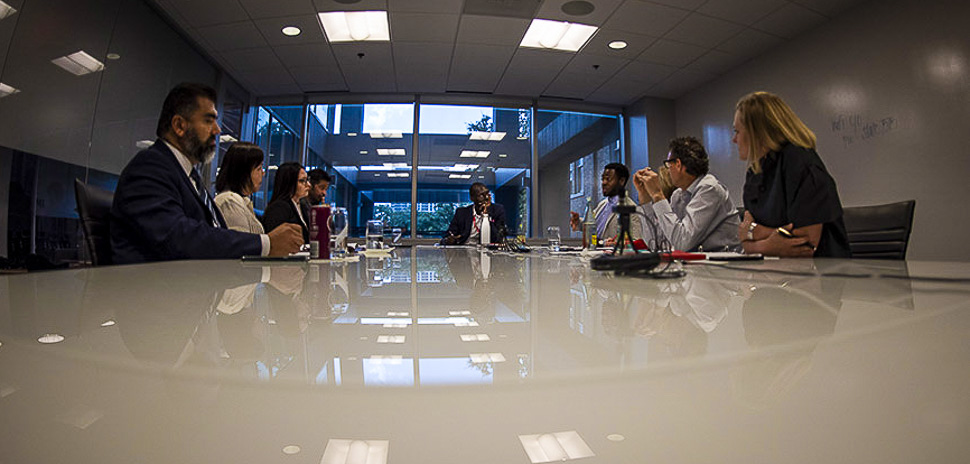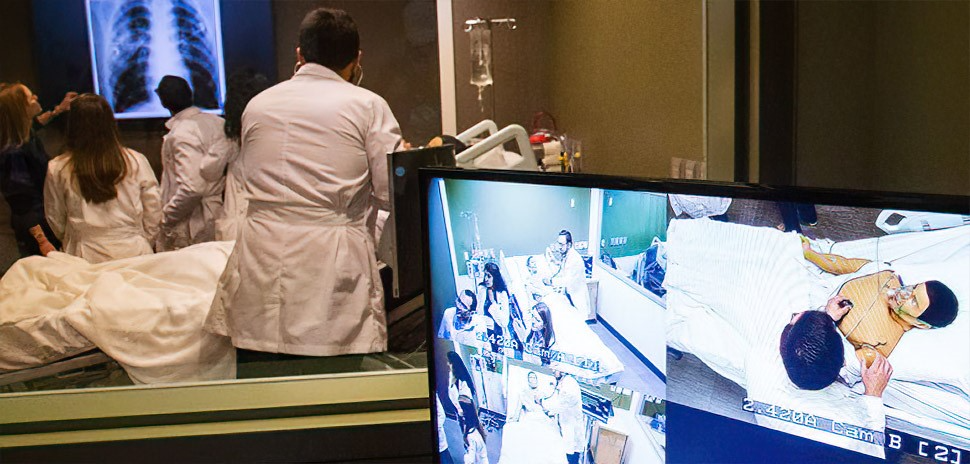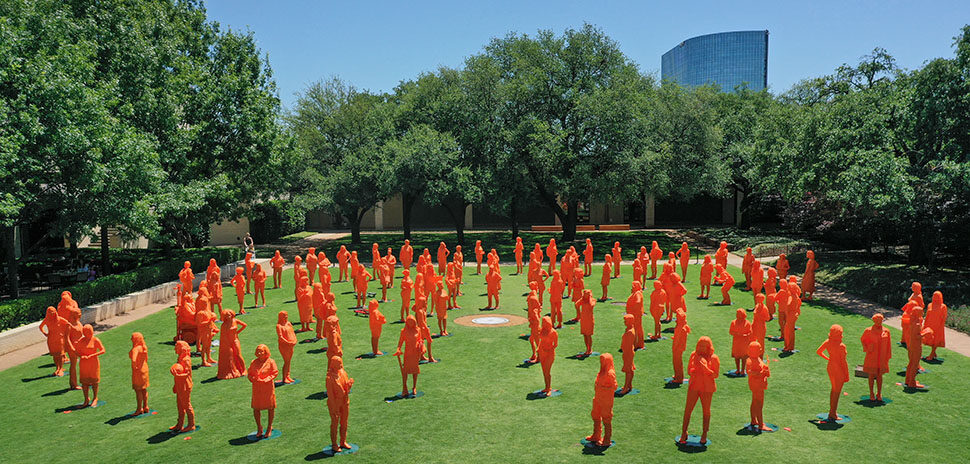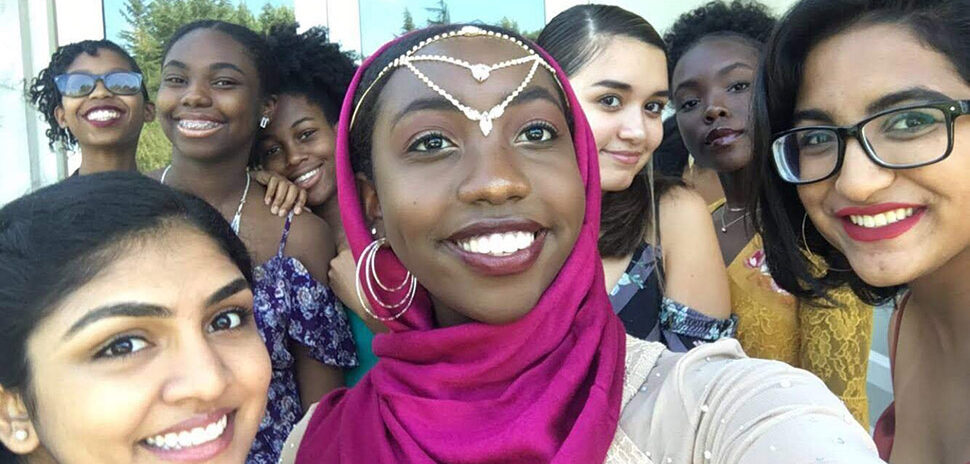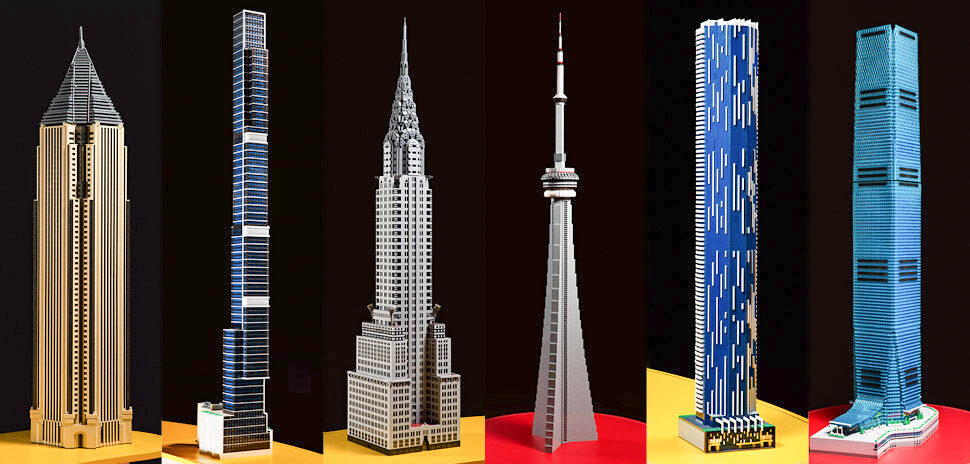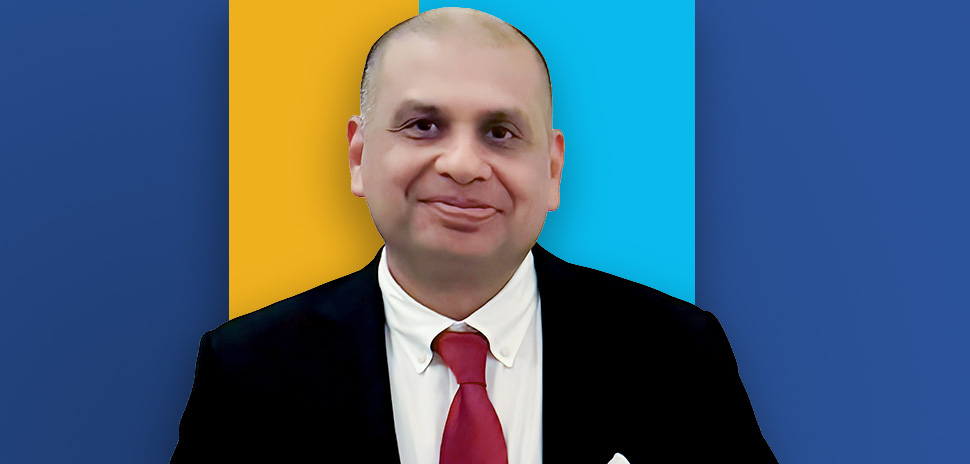![]() Since STEM was coined, it’s been a movement built on fundamentally shifting the way we think about education. STEM—Science, Technology, Engineering, Math—and its variations, STEAM (with its “A” for Art) and STREAM (with its “R” for Reading and wRiting), have their differences and their advocates.
Since STEM was coined, it’s been a movement built on fundamentally shifting the way we think about education. STEM—Science, Technology, Engineering, Math—and its variations, STEAM (with its “A” for Art) and STREAM (with its “R” for Reading and wRiting), have their differences and their advocates.
Whatever your stance on the acronyms—STEM, STEAM, and STREAM—education is essential to building a foundation for a robust, high-tech workforce. It’s an umbrella concept, with each entity working together. And, it can have a significant impact on the workforce, fueling the future of the talent pipeline.
Dallas Innovates brought local leaders together for a three-part conversation on the state of STEM, STEAM, and STREAM in Dallas-Fort Worth—and why it matters to business. In Part One, our eight innovators discussed the meaning of STEM beyond just science, technology, engineering, and math. What does a STEM-driven curriculum look like? It was a large conversation (you can read about it here). But all agreed, now is the time to reinvent the way students learn in Dallas-Fort Worth.
Part Two continues that narrative, with the experts on our roundtable making suggestions for how to advance STEM in the region.
Jennifer Sampson, president and CEO of United Way of Metropolitan Dallas, says we need to engage students to inspire them toward a STEM-related career. As she points out, students “can’t be what they can’t see.” But, fundamental changes have taken place. “The way we thought people learned has been revolutionized,” SMU’s Dr. Stephanie Knight says. “We need teaching to be creative and to match the ways in which people learn.”
Dr. Jason Treadway, director of the STEM Institute at DCCCD, thinks the real demand in the STEM community is the need to educate for middle-skills jobs. To this, Oswaldo Alvarenga, executive director of STEM at Dallas ISD, weighed in on how creating career institutes can help.
The president and CEO of Big Thought, Byron Sanders, pointed out that doing it all with a lens of equity has to be the first step. And everything has to have STEM behind it, according to Sorabh Saxena, president of Global Operations & Services at AT&T Business, in order to make STEM “cool” again. And it is cool, Hilary Jackson, Vice President of Technology at Capital One Financial Services, agrees.
Yet, the challenge is in translating that to students.
It’s more than just talking about machine learning or AI, says Jackson. It’s really about action: It’s about putting technology into “concepts that people can use and get excited about.”
A cultural transformation is essential, Saxena says. “The notion of postponing gratification so that you can build a strong foundation is critical.”
While each of our panelists had a different approach, they collectively agreed that action is needed, and together, we can do something about it.
“If we put our heads together, we could come up with some really neat solutions,” Dr. Koshi Dhingra, founder and director of talkSTEM, says. “It’s about not just one solution, but many solutions.”
Read on to get a closer look at some of these ideas that have the power to drive meaningful change in Dallas-Fort Worth, and beyond.
And stay tuned for our final installment next week for a glimpse at what a STEM-fueled community would look like.
DREXELL OWUSU: How are we giving teachers and districts—or, more broadly, educators—the resources to talk about STEM, STEAM, and STREAM? How do we help them talk about STEM skills and all the things related to it that make a whole person?
MEET THE EXPERTS
MODERATOR
DREXELL OWUSU
Senior Vice President,
Education & Workforce,
Dallas Regional ChamberTHE PANEL
OSWALDO ALVARENGA
Executive Director of STEM,
Dallas ISD
DR. KOSHI DHINGRA
Founder and Director,
talkSTEM
HILARY JACKSON
Vice President, Technology
Capital One Financial Services
DR. STEPHANIE KNIGHT
Leon Simmons Endowed Dean,
Professor, Teaching and Learning,
SMU Annette Caldwell Simmons
School of Education and Human Development
JENNIFER SAMPSON
President and CEO,
United Way of Metropolitan Dallas
BYRON SANDERS
President and CEO,
Big Thought
SORABH SAXENA
President, Global Operations & Services,
AT&T Business
DR. JASON TREADWAY
Director,
STEM Institute at DCCCD
JENNIFER SAMPSON: A big part of our call to action at United Way is to give, advocate, and volunteer—and we have. Over the years, we’ve really focused on STEM volunteer engagement opportunities at schools. This past year, in partnership with Texas Instruments, we had an event called STEM in the Schoolyard. There were six middle schools in Richardson ISD for this particular event, but we’ve done it in Dallas ISD schools as well, that met at Berkner High School this spring, and TI brought 150 volunteers.
Engineers from TI came out with facial recognition software, and robotics. They had a crash simulation where kids could drive cars using remote controls and a LEGO station. There were six different tents on campus where TI volunteers were working directly with the students and teachers on STEM-related activities. We helped show Texas Instruments connected to STEM because they need more young people who want to come work at TI, and the event was a way for them to market what they’re doing to a new audience.
It’s about engaging the students—inspiring them towards the possibility of STEM-related careers. That kind of activity on campus gives extra resources to teachers and schools. and our goal is to try to inspire more kids towards STEM careers. There are a number of other volunteer events, too. We do one with corporations in the summer called “Future Focus Camp” where we do the same thing with corporations that come in. We bring young people in from the schools to expose them to what new opportunities there are.
There’s another program that Lyda Hill Philanthropies invested $25 million in: the If/Then program. That’s really interesting because it’s connecting young people to careers that they might not even imagine are STEM, like fashion. They did a Project Runway-type event to show how fashion is connected to STEM. For young people, you can’t be what you can’t see. Showing these kinds of opportunities and careers with people who are ambassadors and mentors through volunteer engagements or other ways adds to the conversation in different ways with groups on campus and with educators.

Lyda Hill says she designed IF/THEN to “activate a culture shift among young girls to open their eyes to STEM careers.” [Photo: Courtesy Lyda Hill Philanthropies]
DR. STEPHANIE KNIGHT: The ways we thought people learned have been revolutionized. We need teaching to be creative and to match the ways in which people learn, and so we need to change teacher preparation drastically.
I want to go deeper with the teacher resources and professional development.
“The ways we thought people learned have been revolutionized.”
You’re talking about students actively engaging in experiences and motivation. We need to do the same thing with teachers. We need to locate their professional development—both in service and preservice—in the context in which these kinds of activities are taking place. We need this to reach more than just the students. It’s also the teachers we need to reach. By providing professional development and STEM for a teacher, we multiply what we can do.
The second thing has to do with the parents. I’m glad that they’re included in the activities. Their job is to look for the spark of interest that their child has within STEM areas and find resources and experiences to help develop that.
If we can get those two things—the parents and the teachers—we’ll have a very different kind of STEM education within five to ten years.
DR. KOSHI DHINGRA: I agree. And I’ve often thought we need a huge marketing campaign for that—whatever we want to call it. We may need to not call it STEM, because that becomes kind of a brand and, maybe, there’s too much self-identification going on. But, whatever we call it, I could see a marketing campaign around the city or around the region, which would really work.
What’s been a delight to me is that City of Dallas Office of Cultural Affairs has been our biggest supporter financially. Usually, when you hear culture, people think arts and plays and theater, but there’s also science and STEM.
A marketing campaign around the city of Dallas could reach parents and educators—and could foster the notion of an innovator mindset. Again, [the label] is whatever we want to call it. I think innovation has a better kind of feel about it than STEM. Who is going to say, ‘I’m not an innovator,’ whereas it’s easier to say, ‘I’m not a STEM person.’
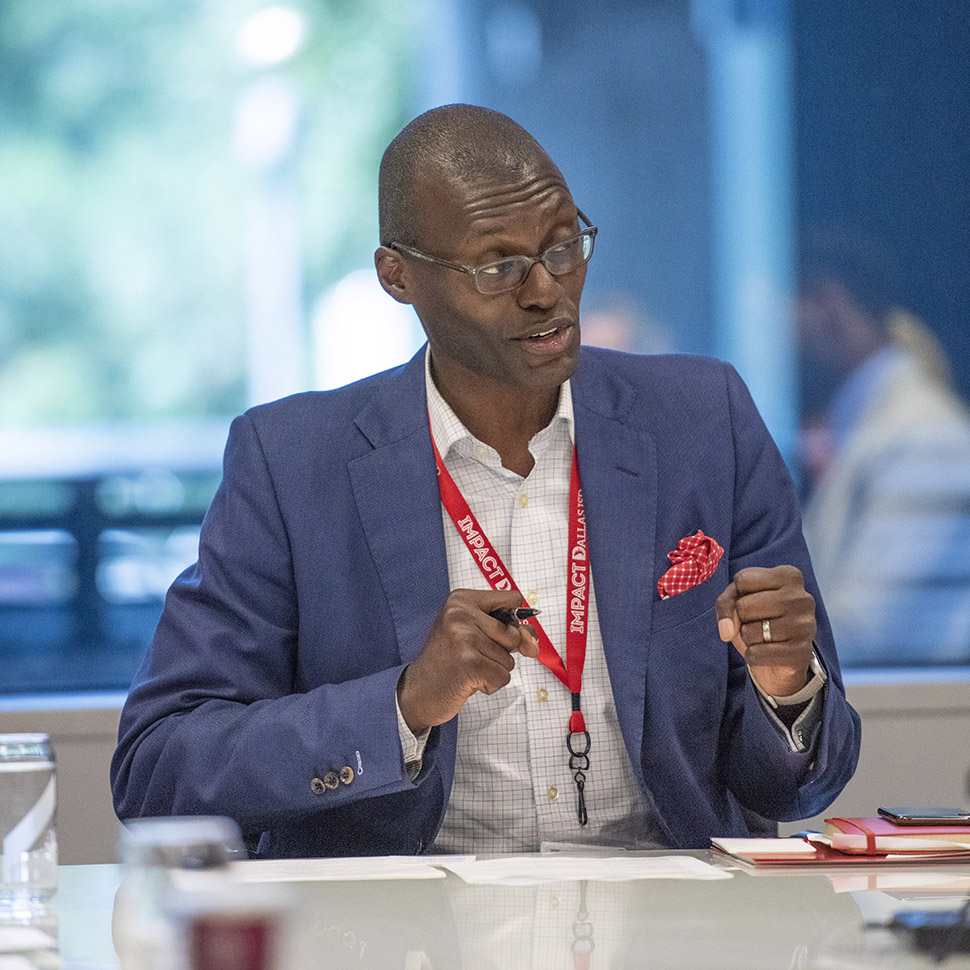
Drexell Owusu [Photo: Michael Samples]
OWUSU: How do we foster the interest in—and the aptitude for—the discussion that we’re having here to happen at home at kitchen tables or in the classroom? How can we help kids envision what they can be?
BYRON SANDERS: Doing it with a lens of equity is going to be really important. When we talk about self-selecting and self-identifying, I can tell you, ‘Just look at the numbers.’ It’s not because of a difference in DNA that we don’t see people of color or women well represented in technology and STEM careers. It’s because, with a lack of representation, there’s a lack of role models. And with a lack of role models, you have a lack of imagination to be able to cast yourself into that space where you feel like you belong, right?
A very intentional effort to put those images out there—and not just images, but proximate interactions with people who are working in these different STEM careers: That is so crucial.
Just to show you how strong those images—or lack of images— are: When I was 15, I thought I did pretty well in pre-calculus. I made an 80-something. I was ready to go on to calculus. But my teacher was like, ‘I don’t think you’re ready for calculus yet.’
“I thought, ‘Okay, well, maybe I’m not a math guy.’”
And I didn’t follow up with a lot of questions. I didn’t say, ‘You need to give me a detailed explanation for that.’ I just took what she said. I thought, ‘Okay, well, maybe I’m not a math guy.’ That carried with me throughout most of my life.
I was working at a bank as an investment manager and still had not considered myself a math guy. That is, until I was sitting in a board meeting and somebody said, ‘You’re one of our math guys, so figure this out.’
And I thought, ‘I am a math guy. That’s right.’ But, those labels—or lack of labels—stick with a person from their childhood all the way through to their adulthood.
So people opting in to say, ‘This is for me. I’m going to spend my time. I belong.’ It really matters. If we do that with a lens of equity and inclusion, it’s going to be critical. And it’s not just putting up images, but really getting proximate to communities and showing, “This is what it could look like. Here’s your exposure, and here’s the actual pathway to success.” That’s really important.
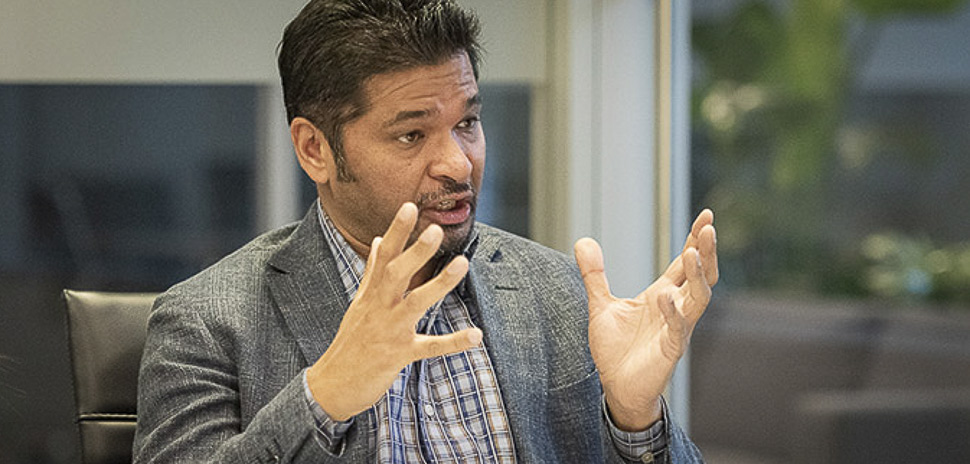
Sorabh Saxena, AT&T
SORABH SAXENA: I’ll add a bit of a personal touch to this. I grew up in India. Postponing gratification has never been a problem—meaning play fewer sports, watch less TV, do whatever it takes. Because that’s what you need to do so your future is better.
I think there’s a cultural element to it: How do we drive a culture that’s steeped more in building a gravitas during the learning years—one that will hold you in good stead in the future? If we don’t teach the parents to teach the kids that we need to incorporate that culture, it won’t happen.
“We’ve got to make this cooler: STEM is cool.”
That’s the way I was raised: “Just study, because you’ve got to do this in the “future, and you’ll be better off.”
The cultural transformation is essential. The notion of postponing gratification so that you can build a strong foundation is critical. To me, that’s at the center, and then we can build the other pillars, meaning better teachers and great parents.
We’ve got to make this cooler: STEM is cool.
SANDERS: That’s right.
HILARY JACKSON: It is really cool. I think the most important thing is definitely a bias for action—getting in front of the community and not just talking about machine learning or AI, but actually putting it into concepts that people can use and get excited about.
SAXENA: STEM is really cool. We’ve got to just tell that it’s not hard, it’s cool.
KNIGHT: Although you do have to have productive struggle.
If there’s not an element of risk involved, kids get bored. They check out.
SANDERS: And actually, our humanity demands it. If there’s not an element of risk involved, kids get bored. They check out.
SAXENA: Yes. And to the point of STEM is cool: There is risk-reward because all stats prove that a STEM education sets you off on a better path In the future. Growth from 2017 to 2027 is anticipated to be 14 percent in STEM jobs. Growth in other jobs is 8 to 9 percent. Those are the simple facts. So if you can tie the effort and the rigor, it will pay off much better later. Postpone your gratification: It’s cool because the world doesn’t work without technology anymore, nothing does. So you will need to participate in it and build the right parent-teacher model.
OSWALDO ALVARENGA: Can I take the conversation back to equity? Our pre-AP—pre-advanced placement—starts in sixth grade. That’s when you begin to accelerate. And if you accelerate, that means you’re going to take Algebra 1 in eighth grade. If you take Algebra 1 in eighth grade, a lot of good things happen. It opens up your schedule. You’re taking those advanced physics courses, advanced biology, pre-cal, but when does that happen?
SANDERS: When they’re a freshman, it’s too late.
ALVARENGA: It’s too late, right? In Dallas ISD, 20 percent of our student body is normally pre-AP. So, that means I had 22 seats, and I always had 22 seats. What if I had 25 students that were ready for that? I only have 22 seats, so only 22 get in. So, traditionally, that has been the percentage.
Over the years, Dallas ISD has increased its math pass rate for the “meets and masters.” We’re at the high 80s right now. For an urban school district to be in the high 80s in math is kind of unheard of. Dallas is leading the nation in this. So if 80 percent of our students are at the “meets and masters,” can we have only 20 percent of our students in the pre-AP?
“Now, it’s not left up to chance.”
So guess what we’re doing? We’re putting a policy in place that if our students place “meet and masters” on their assessment, they’re automatically put into our pre-AP track. [Now] we’re looking at 80 percent—and a parent has to opt their student out of pre-AP.
Now, it’s not left up to chance. Last year, we found 1,000 students who should have been in pre-AP, and they were not. We got them in towards the end of the year, and we accelerated them. They will be in pre-AP seventh grade this year and will take eighth-grade pre-AP. That’s 1,000 more students.
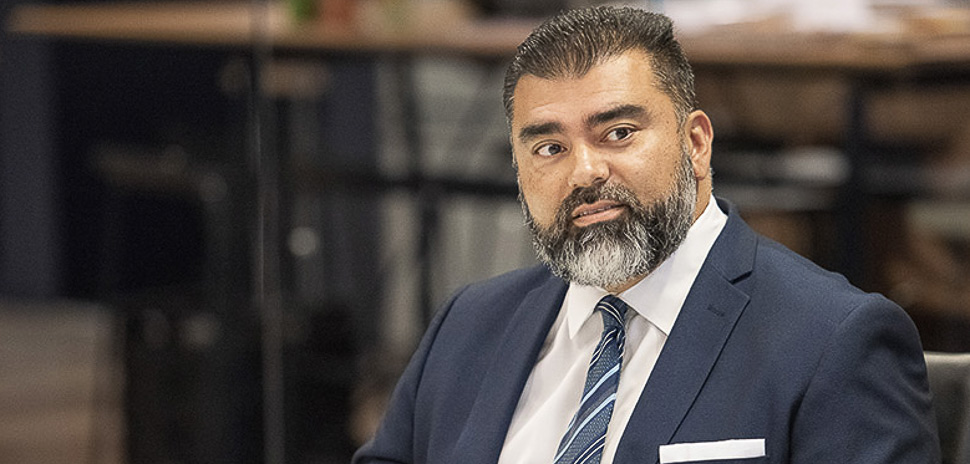
Oswaldo Alvarenga, DISD
SAXENA: It’s really important for corporations to participate in this kind of effort. [AT&T is] an executive sponsor for West Dallas Community School. It’s a cool neighborhood surrounding the school, but it’s actually a very depressed area. Trinity Groves is coming up there, but it’s a pretty economically depressed area.
“They can’t be what they can’t see.”
Most of the kids are from single-parent families or foster kids. The school ends at eighth grade. To your point, the kids have no idea of what to do after eighth grade because they can’t be what they can’t see, as Jennifer said earlier.
The first thing we did was brought them to AT&T’s campus and actually walked the kids on all on the floors and to show them the possibilities that exist: Legal, finance, IT, you name it. We want to give them the impetus as to why they should go from 8th to 12th grade and then 12th to college.
SAMPSON: Even cool jobs in the entertainment industry, such as Warner Media, can require a STEM education.
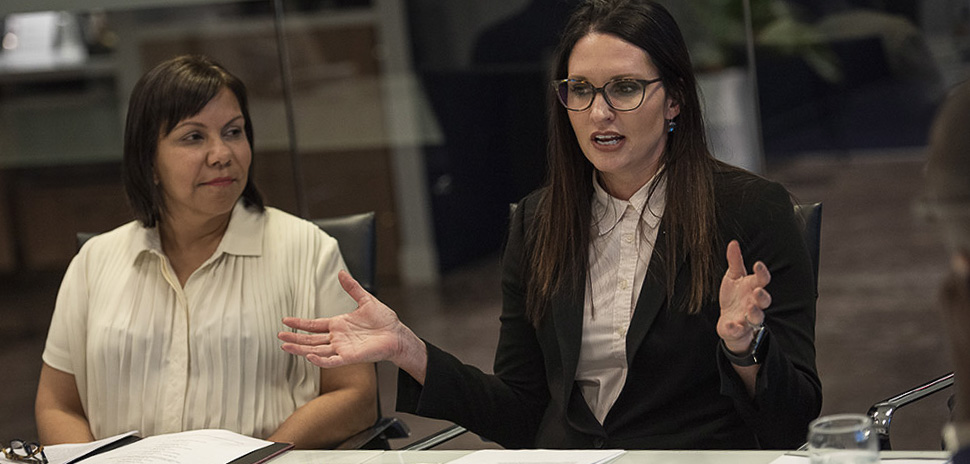
Dr. Koshi Dhingrad, talkSTEM and Hilary Jackson, Capital One Financial Services
OWUSU: You’ve all talked about making STEM cool. Have can businesses help make it cool so that people have something to aspire to? And, there’s a “real world” aspect. A lot of community college professors are adjuncts who work real jobs in the industry, right? So they’re bringing self-synthesis education.
JACKSON: That’s one of the things that we found when we were talking to teachers. Teachers told us, ‘We’ve never worked in a corporation. We don’t know what problems you guys are facing. We don’t know how to talk to our students about how to best prepare themselves to go work for you guys at some point.’
“We talk to them about how we’re applying machine learning and artificial intelligence to solve real problems.”
As a result, we expanded the Plano Mayor’s Summer Internship Program to include a teacher externship program two years ago. Local corporations partner with teachers in Plano ISD and bring them into their corporations. At Capital One, we teach them the latest in design thinking and technology. We talk to them about how we’re applying machine learning and artificial intelligence to solve real problems, and then they can take that back into their curriculum for the upcoming school year and talk to their students about what they’ve seen.
I think the other thing that is really important for corporations to focus on are strong partnerships with nonprofit organizations. We host a conference every year called the Reimagine Communities Summit, and we bring in thought leaders and nonprofits from all over the country. We talk to them about how to leverage technology to improve their public services and infuse it into their communities.
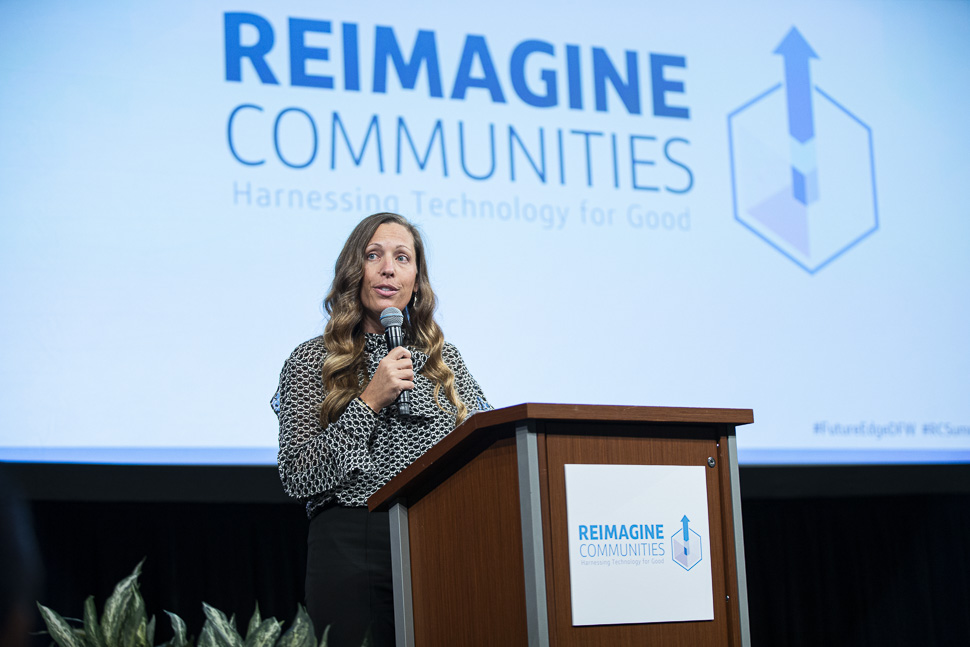
“Harnessing Technology for Good”: Tiffany Cason, Dallas Market President, Capital One speaking at the Reimagine Communities Summit in October 2019. [Photo: Brandon Wade]
I think it takes this really big ecosystem to create a vibrant community, and so if you’re just focusing on the students, and you’re not focusing on the teachers, and you’re not focusing on the nonprofits, and you’re not focusing on the parents—you’re really doing the community a big disservice.
KNIGHT: I really would love to tell you about a project that we have, and I want to talk with you later to get ideas. We have a partnership with Toyota and Dallas ISD, and Toyota has given us a three-year, $2 million planning grant to open a pre-K/8 STEM-focused school in West Dallas.
We’re in the second year of our planning, and it’s a unique project, not like anything that I’ve ever done before—and I’ve been in this business a long time. What we’re able to do is bring together the pieces as a system, rather than an isolated school. Our deliverable is a model—and I’m going to say this with quotation marks—that’s “transportable.”
“We are learning to talk with each other—we call it ‘dancing together. We’ve stepped on some toes, and I think we’re about at ‘cha-cha’ right now in our second year.”
That doesn’t mean that you take the existing model and plop it in some other context, because what we know is that context really matters. This school is unique in many ways. First of all, it’s unique in its three partners: a large urban school district, a small private university, and then a large industry. We are learning to talk with each other—we call it “dancing together.” We’ve stepped on some toes, and I think we’re about at “cha-cha” right now in our second year.
But what we’ve visualized is a school that has wraparound services that coordinate the nonprofit kinds of activities and the out-of -school activities with what’s happening in the classroom, and that has all the support we’re talking about. We have the luxury of two more years of planning. All the kinds of things that you’re talking about would be candidates for what we could create in this particular school, so I need you.
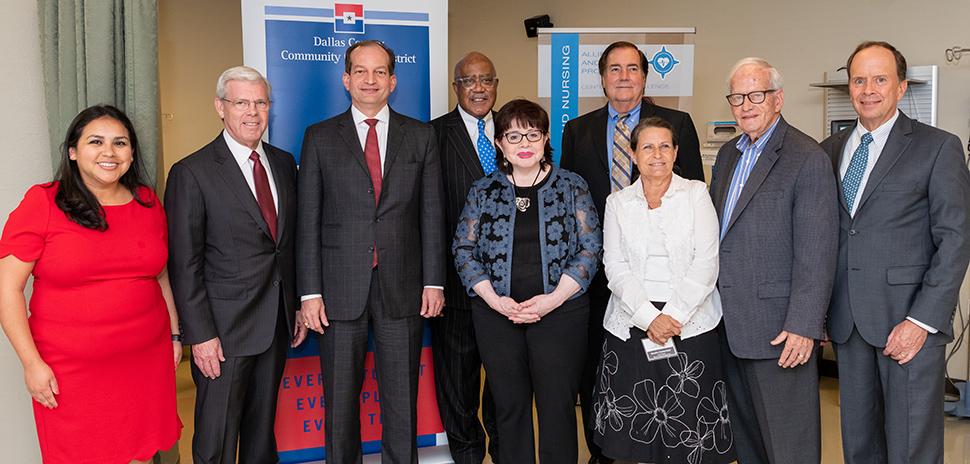
DCCCD apprenticeships announced: U.S. Labor Secretary Alexander Acosta, third from left, joined DCCD Chancellor Joe May, second from left, and members of the DCCCD board, to announce the $12 million grant for healthcare apprenticeships in July 2019. [Photo: Courtesy Dallas County Community College District]
TREADWAY: I’ll change the direction just briefly. I think that as a STEM community, we need to do a better job of educating the public on middle-skill occupations because the bulk of STEM jobs need those middle skills. They’re not all neuroscientists doing research for UT Southwestern, and they’re not [necessarily] Ph.D. chemists.
“It’s the middle skills.”
It’s the middle skills. For Dallas County Community College District, we have a collegiate academy. We’re making education accessible to students that otherwise wouldn’t have access to that via Dallas Promise and other things.
ALVARENGA: And you should have about 1,800 students graduating next year.
TREADWAY: Exactly. So the STEM community, I think, should do a better job of helping the general public understand that the real demand is middle skills.
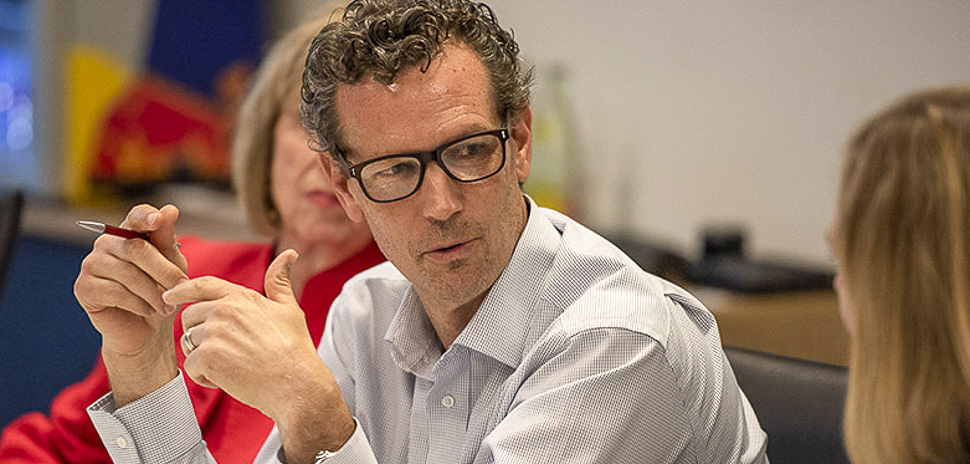
Jason Treadway, DCCCD
SAMPSON: You’re absolutely right. As an example of what you’re talking about, we’ve partnered with Frito-Lay PepsiCo. They came to us a little over a year ago. More than 50 percent of their employees work in the southern Dallas sector, and they want the families and the students in those schools to know that when they graduate in the southern Dallas sector, they’ve got a great job opportunity with Frito-Lay PepsiCo.
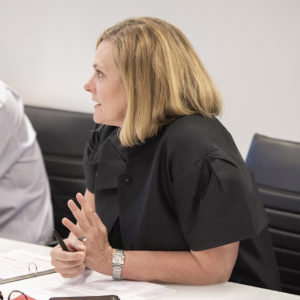
Jennifer Sampson
And it may not be for a student that’s going to a university. They may not be going to community college, although we hope for that for every student. If a student is graduating and they’re certificate-eligible, they can go to work in a manufacturing job, truck driving, or repairs and earn a very good salary. Over time, with a career ladder, they could provide for their families. They can then send their kids to college, and so that’s another example of how a company is looking at, ‘How do we build the workforce for the future and connect young people to really good jobs?’
ALVARENGA: That’s come to the forefront in Dallas ISD. A new thing we’re doing is, on the spectrum of students, you have a lot on one side. You have advanced placement. You have AP, you have dual credit. And, as you’re saying, there are a lot of middle-skill jobs, so what we’re doing is creating career institutes.
“We’re going to have four hubs in the city of Dallas.”
We’re going to have four hubs in the city of Dallas. Each hub will service about five to seven high schools. They’ll come out of those high schools and spend half a day creating their career technology education pathways. Those careers are in areas like solar and electrical technologies, and construction technologies, avionics, and drones. These will be for the students who are getting their certifications.
They’re getting some dual credit, and then they can continue on. If they have to ‘offramp’ to get a job, then they will have those skills, but they also can go to community college at the same time and not build up debt—or they can continue on to community college or a four-year university.
The students are still getting their full endorsements, but our first freshman class will go into their home campuses while the centers are being renovated. I can’t say where they are yet, but two buildings will come up in the next two years. Then, in years three and four, we’ll have two more buildings, and they’ll act like hubs for the whole city.
SAXENA: That’s great. To pull this back to your question, how do we all—especially corporations—make it cool? I think in elementary school, they should have a different type of play, which is very much focused on parents. And it should be focused on driving early interest in STEM in a way cool way, right?
“Middle school is where the breakage happens, because that’s where everything else becomes cool except for STEM.”
Basically, everything that you see has STEM behind it. All the kids watch TV. All the kids know of mobile phones—if they don’t have one already in elementary school—and so on. Middle school is where the breakage happens, because that’s where everything else becomes cool except for STEM. That’s why it’s very important for us.
SAMPSON: Because it’s hard.
SAXENA: Because it’s hard, and because it’s no longer cool-looking or whatever the superficiality of things are: sports, etcetera. So we’re got to keep emphasizing in middle school that STEM is cool, and why it is so important. And then, from high school onwards, to your earlier points, Jason and Oswaldo, you can show different onramps and offramps: If you want to go to middle-skills, you go this way. If you want to go for higher skills, you go this way. Or, if you want to progress in a creative design-thinking manner, you go this way. So we can show that, but capture it all within the context of ‘this is where the growth is.’ That’s what the world wants right now.
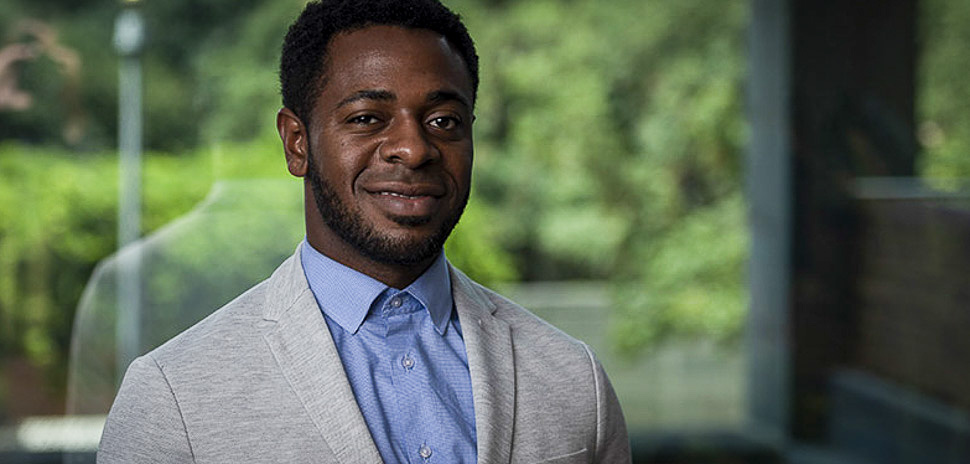
Byron Sanders, Big Thought
SANDERS: One of the other things that I wanted to lift up is, how do we take this into the public square and make it something that people can embrace? We also have to start thinking about this as a function of justice.
Here’s what I mean by that: If you look at the trends and where things are going, we talk about how automation, artificial intelligence, and technology is really changing everything. For example, I went to an airport recently, and when I picked up my Hertz rental car from a kiosk I was talking to a person. I was in Miami, but I was talking to somebody in North Carolina in order to get that.
“If you think about the people who are usually in those jobs—the ones that are most easily automated-out or technology-displaced—those are folks who are already living at the margins.”
So that means there are now hundreds of jobs in that one area that are no longer there. If you think about the people who are usually in those jobs—the ones that are most easily automated-out or technology-displaced—those are folks who are already living at the margins. Those are people who are hourly, those are largely communities of color—black and brown communities, right?
And so if we’re talking about the future and where our economy is going—where our society is going—it’s an imperative that we start to anchor the progression of our thoughts on how we get STEM to different communities as a function of justice. … There will be communities that are disproportionately affected by it.
KNIGHT: But it needs to be culturally relevant.
SANDERS: Here’s another, even deeper, dive into that. When we think about formerly incarcerated people—when we’re thinking about returning citizens—when you talk about all those middle-skill jobs that are available: aviation, IT support, and all of these different things that don’t necessarily require a lab coat, it’s a $60,000 job, right?
“We need to start talking about this from an imperative.”
When we’re talking about how we have to make these available, it’s not just a, ‘Hey, this is good to have.’
We need to start talking about this from an imperative. If we do not do this, there’s a reality that we’re looking at where we have more and more people being displaced who are part of marginalized communities that will not have access to what we have historically known as the American dream. Or at least what we are ideally framing as the American dream.

SMU’s Dr. Stephanie Knight
KNIGHT: It starts in the schools. For low-income and underrepresented families, there’s a pedagogy of poverty that exists, and it’s impoverished in two ways: the few resources and also teaching is a direct instruction model that doesn’t involve the kids in active engagement in STEM. We’ve got to break that cycle first.
DHINGRA: I’ll piggyback on what you’re saying. Research indicates that at very early ages—surprisingly early ages—girls self-select out in terms of their identity. That happens—certainly in low-income settings, but surprisingly, in all settings, regardless of what kind of school and teacher they have.
Something is happening in our society that’s telling young girls that they’re not good. It usually starts with math, which is why I’m so glad talkSTEM started off with math. We partner with the National Museum of Mathematics. And, guess how many there are in North America? There’s one, and it’s in New York. The founder of that museum is my advisor and my collaborator in what we’re doing. We definitely have a math focus, because math is a language.
“Math and music, they go together.”
We’re also working with the Dallas Symphony Orchestra (DSO), because guess what? Math and music, they go together.
I wanted to speak to math because that’s the one word that has the word “anxiety” right next to it. That’s regardless of what school you went to. I’m not a mathematician, by the way: I’m a biologist. This has all been an education for me as well. But, math is all around us.
To Sorabh’s point, why do we make it so hard? Why can’t it be about what you see? If it’s a language, what do we use language for? We use it to communicate, to ask questions, and to describe. In our case, we use videos, so there’s obviously lots of modalities.
OWUSU: We’ve talked about statistics. What about engaging girls in STEM, specifically?
DHINGRA: Going back to girls, the numbers are shocking. About 25 percent, I think, currently are in STEM-related careers. As the Girl Scouts love to say—and I think they say it well: ‘If you can’t see it, you can’t be it.’
“We need these things to stick—because they can’t just be one-shot deals.”
So, where are the role models? I’d like to dive a little deeper. I think one-shot deals are great, but it’s like the field trip phenomenon: It doesn’t stick. Those of us who have been teachers, you spend time and energy on a field trip, and of course, the kids love it because you get to go out. But, what sticks?
How do we get all of that energy that exists in going and seeing role models and mentors in workspaces and the field trips in these wonderful museums and institutions? How do we make it stick?
I think we can disrupt the continuum of in-school and out-of-school—and we have the technology to do it right now. We have the solution to what you were talking about, Byron. We need these things to stick—because they can’t just be one-shot deals.
SANDERS: That’s right.
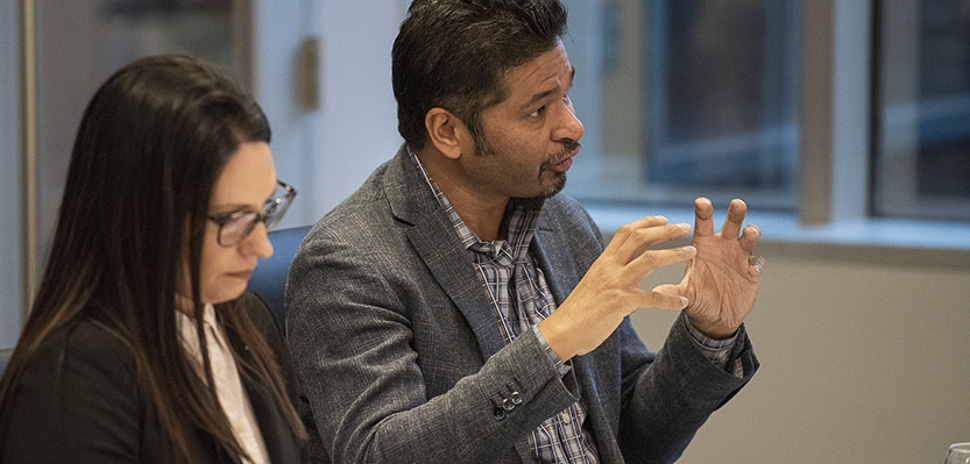
Hilary Jackson, Capital One Financial Services and Sorabh Saxena, AT&T
SAXENA: I loved Hilary’s earlier point about building partnerships. … If we can have six or seven entities working together with a common vision—it can go a long way.
DHINGRA: I love that vision. That would be amazing.
SANDERS: Count Big Thought as a friend of that idea, however we can help.
DHINGRA: A lot of people around this table, if we put our heads together, we could come up with some really neat solutions.
And it’s about not just one solution, but many solutions.
This panel has been edited for brevity and clarity.
READ NEXT
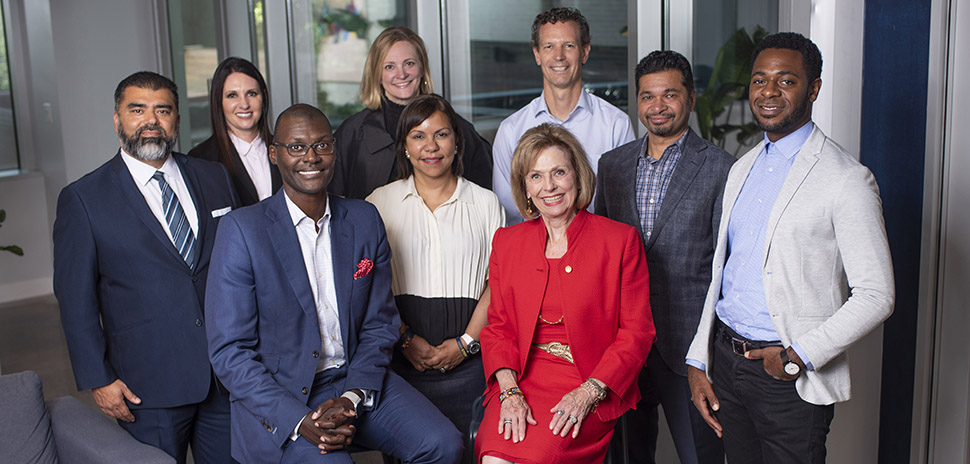
[Photo: Michael Samples]
STEM, STEAM, STREAM: North Texas Experts Discuss Why Education Matters to Business
In this three-part series, experts talk about the state of STEM, STEAM, and STREAM education in Dallas-Fort Worth—and what it means to our future workforce.
In Part One, these leaders tackle how to define STEM and also identify opportunities to come together to fuel the talent pipeline.
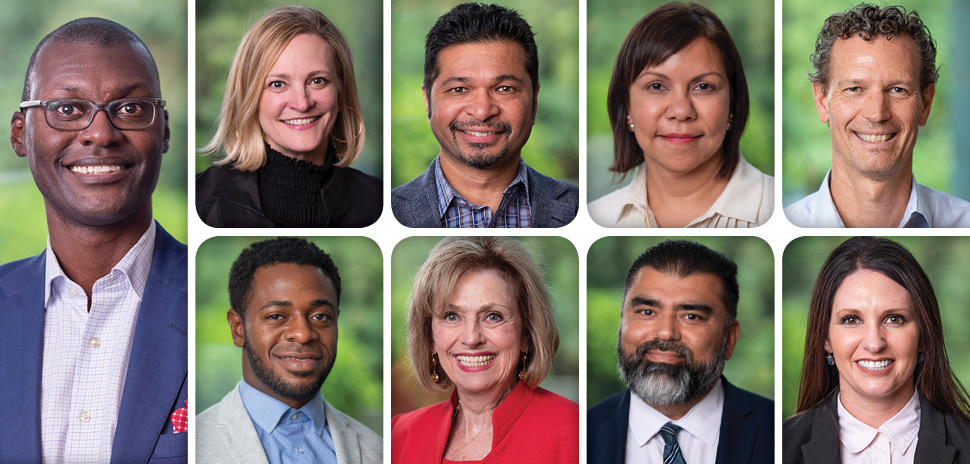
[Photo: Michael Samples]
STEM, STEAM, STREAM: “In Dallas, the Ingredients are Here.”
Dallas-Fort Worth has the pieces—educators, nonprofits, corporations, technology, and the will—to be known as a hub for innovation and technology, our panel agrees. But, to attract and prepare the next generation of world-class talent, we need action.
“Hopefully, we’re all beginning to push this boulder up the hill, together,” DRC’s Drexell Owusu says. Read more in the final installment of our series.
![]()
Get on the list.
Dallas Innovates, every day.
Sign up to keep your eye on what’s new and next in Dallas-Fort Worth, every day.
